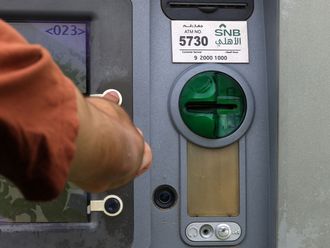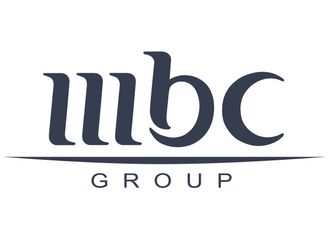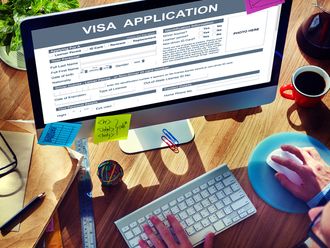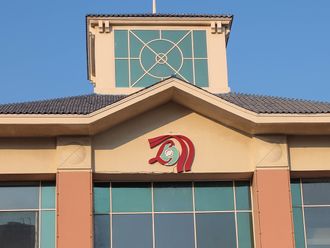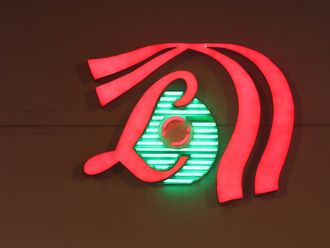
Prabissh Thomas is an ordinary man, with extra-ordinary talent. But you wouldn't know until you talk to him for at least an hour — that is the time it took me to realise a bit about him.
Five years ago, he started a business in Dubai under the name of Green Energy LLC with a mere Dh10,000, in a 100 square foot office. It was a one-man show, like most start-ups.
But his company was in a different kind of business — sustainable solar and renewable energy — a field that very few thought had such growth potential in the oil-rich Gulf region.
"Back then it was a totally new area, especially in the Gulf," Thomas says of the business' start. "That's where the potential for growth in green energy products lies."
Global buzzword
Today green and renewable energy has become a buzzword globally. It has also been getting attention in the Gulf countries lately.
The Gulf states have one of the highest carbon footprints in the world and the use of green energy helps reduce carbon emissions.
Christian von Tschirschky, principal with AT Kearney Middle East, said, "Solar electricity is at the top of utilities', governments' and decision-makers' agendas on a global basis and the Middle East and North Africa (MENA) region is no different. In a best case scenario and with the proper support, the MENA region could become the leading solar energy provider globally."
Today Thomas' order book holds millons of dollars. His business cards carry three company's names - Green Energy LLC, PTL Solar LLC and PTL Solar FZ LLC.
With a team of 85 people, these companies are now producing and assembling green and sustainable energy products that are exported to various parts of the world.
Through the sale of renewable energy products in 2009, PTL Solar has saved more than 6,500 metric tonnes of carbon-dioxide emissions, 44,100 kilogrammes of Nitro dioxide emissions.
"This equates to 484,218 gallons of gasoline, a statement in his business card claims."
With a price tag of Dh6.75 per gallon, this translates to Dh3.26 million worth of savings.
His biggest break came from Iraq in 2008 - a Dh183 million ($50 million) order due to a simple e-mail.
"I had replied to a normal email inquiry from a US official stationed in Iraq, from his personal mailbox, on some of our products. It was a routine e-mail. I wasn't expecting anything from the mail," says Thomas.
Saving lives
"But then, the reply came with a serious query. Over a few months, I received an order to supply 4,000 units of energy efficient lights to be installed on the streets of Baghdad.
"In a few months, insurgency dropped."
PTL stands for - Power the Life. In Iraq, the company's products have been saving lives as well.
One hour's sunshine is enough to power the world for a year. While increased economic growth in emerging markets is driving demand for power, solar, wind and other renewable energy could help mankind meet it more efficiently.
The World Bank said the global carbon market grew to $144 billion (Dh528.82 billion) last year - a challenging year, up 6 per cent from 2008.
"Solar energy has seen impressive expansion - 36 per cent compounded annual growth for the global solar industry since 1999 - but it has far, far greater potential," said David Wooley, vice president at the Energy Foundation.
Global management consultants AT Kearney said in a report that it believes that investment in solar energy can create annual revenues of $90 billion for the Middle East and North Africa (MENA) region. The MENA region has the opportunity to become a "boom centre" for solar energy within the next 10 years, creating up to 100,000 new jobs, it said.
Potential
Louis Besland, partner of AT Kearney Middle East says, "The potential is tremendous. High solar radiation in the MENA region contributes significantly to the cost advantage of solar power. Given the increased electricity needs of the Middle East region, solar thermal electricity can definitely play a key role in the future energy mix and offers a unique opportunity for regional governments and utility companies."
The Middle East and Africa region holds 45 per cent of the world's energy potential from renewable sources - enough to generate more than three times the world's power demand, Prabissh Thomas says.
Effective utilisation of green energy could help make economies more sustainable. However, a push by governments and effective regulations could help.
Environmental laws
In line with these, the authorities in the UAE are now considering a number of legislations to reduce energy consumption, thanks to efforts by environmentalists.
Dubai Government in 2008 has issued a Green Building Regulation that encourages buildings to be made green. A number of UAE organisations are now offering products and services to increase energy efficiency.
Nasser Ahmad Al Suwaidi, Chairman of the Department of Economic Development (DED) in Abu Dhabi, said, "Governments worldwide are increasingly faced with the sustainable development dilemma especially in response to the recent financial crisis, where it became mandatory to build economies on more robust elements, such as effective governance principles, diversified economic activities, and fair wealth distribution throughout the population, while protecting environmental resources in order to sustain the development process."
DED has released its first sustainability report. The initial report suggests how businesses can be made more sustainable in a challenging economic environment.
Abu Dhabi Government is investing $22 billion in a carbon-neutral neighbourhood, Masdar City while the holding company Masdar is investing in education and developing new technology that will help reduce energy consumption.
"Per capita energy consumption in the UAE is one of the highest in the world," Thomas says. "This is where renewable and solar energy could reduce its carbon footprint."
The UAE's power demand is expected to reach 40,000 megawatt (MW) in 2020, from the existing 17,000 MW, reflecting a cumulative growth of 9 per cent per annum.
PTL Solar has so far rolled out a number of its patented green energy products that have been well received by government authorities across the Middle East and Africa. Among them is a standalone solar street light that costs Dh12,500 per piece. A total of 10,000 units could light up Dubai's streets, without power supply. It collects energy from sunlight during the day and powers the environment during the night and could provide one of the biggest energy saving to a city.
It has already established presence in the UAE, Ghana, Ethopia, Nigeria, Malawi, Saudi Arabia and Djibouti due to demand for products.
Demand
Due to the high demand for solar energy products, PTL Solar is now investing Dh100 million in a facility to produce photovoltaic (PV) panels. Manufacturing is expected to start in 2012.
According to Marketbuzz 2010 Report, the PV industry generated $38 billion in global revenues in 2009, while successfully raising more than $13.5 billion in equity and debt, up 8 per cent on the prior year.
"Photovoltaic production has been increasing by an average of more than 20 per cent each year since 2002, making it the world's fastest-growing energy technology. At the end of 2009, the cumulative global PV installations surpassed 21,000 megawatts," Thomas says.
According to the Worldwatch Institute, a Washington DC-based research institution, in 2009 some 7,300 MW of new solar-based clean energy generation was installed around the world.
Going green is essential
Private corporations and the public sector in the region are facing increasing pressures to reduce their carbon emissions and energy bills, according to the latest Booz & Company study.
"This is driven by enforced legislation and regulation, increasing energy costs, and, perhaps as important, a constantly growing demand from customers for more sustainable operations and products," it said.
For most companies, going green is rapidly becoming an imperative, but as critical as green strategies are, many companies are unsure about how to begin.
Positive impact
To start with, most people are unaware of how to make businesses green. A report by Frost and Sullivan says, "An eco-sustainable business is one that has a net positive impact on the environment, is eco-efficient and generates renewable value with a full lifecycle perspective."
A recent survey by Economist Intelligence Unit showed that 43 per cent of companies believe increase virtual meetings and reducing employee travel could help reduce carbon footprint while 32 per cent reduction in use of paper could help.
About 29 per cent want improving efficiency of supply-chain operations and logistics to make companies ‘green' while 28 per cent participants believe enabling greater remote/home working by employees could make businesses sustainable as these help cut costs and save time.
Long-distance commuting is still the norm in spite of progress in flexible working practices, says the latest report by global workplace solutions provider Regus.
People spend more than an hour to reach offices in Dubai from Sharjah everyday. These days, thousands of professionals commute between Dubai and Abu Dhabi - a distance of 120-150 kilometres each way to work and home. Roughly three hours are spent on roads.
While in the UAE only 9 per cent of commuters travel over 90 minutes every day, globally, 20 per cent of workers are faced with a 90 minute daily commute, the report says.
Globally, cars are by far the most popular form of commuter transport (64 per cent). In the UAE car use is much more wide-spread (79 per cent) than average.
Mark Dixon, CEO of Regus, comments: "With 2010's second rise in petrol costs taking effect in July and as traffic congestion in cities increases, it is disappointing to see that too many workers are still jamming the roads in the rush hour when they could be spending their time more enjoyably or more productively elsewhere." Further pain commuters are forced to face is in the cost of travel. While on average 7 per cent of commuters globally spend 10 per cent or more of their salary on commuting, in the UAE the average spend for commuting is 4 per cent of yearly salary, the survey finds.
In the West, many companies allow professionals to work from home to save time and cut costs. And it works.
Despite these, going green the right way for most businesses remains a mystery or a problem too daunting to tackle in a fully-fledged approach.
Inefficiencies
But avoiding this issue in the hopes that it will resolve itself via half measures is not acceptable anymore, as many organisations are learning; this can result in continuing inefficiencies, expensive energy costs, wasteful processes and less than stellar relationships with potential customers, the B&C study said.
The number of PCs worldwide is projected to double between now and 2014, and mobile voice and data traffic is forecast to rise fourfold by 2012. As a result, total ICT emissions are on track for a 50 per cent increase by 2020.
Greening IT
"It's clear that information and communication technology (ICT) usage by companies contributes significantly to the carbon footprint, making up nearly two per cent of global CO2 emissions today - about the same level as the entire airline industry," commented Danny Karam, a Senior Associate at Booz & Company.
Faced with these realities, many companies take a narrow view of the way IT can help reduce their carbon emissions.
The approach they choose is what we call ‘greening IT' - carbon footprint reduction programmes focused solely on minimising energy usage and non-recyclable waste in corporate IT departments.
However, with a macro, business performance oriented strategy that can be termed going green through IT, IT innovation is leveraged to make the organisation's operations as a whole more eco-conscious, added Karam.
A host of activities unrelated to IT operations within an organisation can yield dramatic carbon reduction when green applications are leveraged in areas such as process and building automation, logistics, energy, motors and teleconferencing.
In fact, IT advances targeted at low-carbon solutions could lower the global carbon footprint by as much as five times the emissions from ICT itself, according to Smart 2020, a report published by the Climate Group. These applications not only diminish environmental impact but effect performance by driving down energy and waste costs, it said.
Solar power
Photovoltaics (PV) is a method of generating electrical power by converting solar radiation into direct current electricity using semiconductors that exhibit the photovoltaic effect.
Photovoltaic power generation employs solar panels comprising a number of cells containing a photovoltaic material.
Materials presently used for photovoltaics include monocrystalline silicon, polycrystalline silicon, amorphous silicon, cadmium telluride, and copper indium selenide/sulfide.
Due to the growing demand for renewable energy sources, the manufacture of solar cells and photovoltaic arrays has advanced considerably in recent years.
As of 2010, solar photovoltaics generates electricity in more than 100 countries and, while yet comprising a tiny fraction of the 4800 GW total global power-generating capacity from all sources, is the fastest growing power-generation technology in the world.
Between 2004 and 2009, grid-connected PV capacity increased at an annual average rate of 60 percent, to some 21 GW, according to Renewables Global Status Report 2010.




